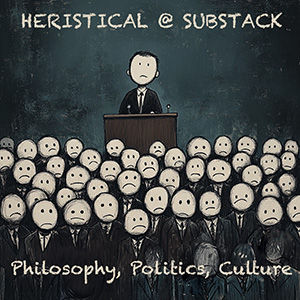
I don’t remember feminism’s Second Wave. Born in 1975, I was alive for most of it, but too young to take account of what was going on.
I didn’t come from the kind of background where feminism was discussed (at least, not approvingly). By the time I embraced the concept for myself – the early nineties, when Rebecca Walker published “Becoming the Third Wave” – the second wave had already crashed, not that we minded too much.
My generation, so we believed, would reap the benefits of earlier activism, but also improve on it. Unhampered by the pressures on our mothers’ generation, we would refine understandings of gender and power. Earlier feminists hadn’t been able to do this. They’d been too blunt, too simplistic, not to mention too obsessed with the body.
Not that I wasn’t obsessed with the body myself. Since the age of eleven, I’d been attempting to exist beyond it, denying myself food and growth. I was, intermittently, hospitalised and force-fed, though no one really asked why I was starving myself. I didn’t ask myself either. I just knew that when I saw other girls, with their hips and breasts, I couldn’t be them. I wasn’t like them and whatever was in me – that terrible potential to become woman-shaped, with everything that entailed – had to be kept in check.
There were feminist analyses of why I did what I did: Sheila McLeod’s The Art of Starvation (1981), Marilyn Lawrence’s The Anorexic Experience (1984), Susie Orbach’s Hunger Strike (1986), Morag MacSween’s Anorexic Bodies (1993). I didn’t read these, at first because I was too young, then later because they seemed irrelevant. I wasn’t interested in a feminist understanding of anorexia. I felt it would cheapen the project in which I was engaged, suggesting I was simply upset about fashion models, or inordinately angry at men. I also feared – though I struggled to admit it – that to politicise what I was doing would make people angrier at me.
The treatments I experienced in the late eighties were hostile, rooted in an understanding of anorexia as bad behaviour. As Orbach wrote in 1986, “treatment models share the common assumption that the anorectic is wilful and stubborn in her refusal to eat”. This understanding of anorexia was gendered and age-based; young women were viewed as vain, manipulative, too focussed on the trivial to engage in any protest that could have social or emotional validity. To Orbach, these assumptions led to treatment as punishment. She describes force-feeding as “an intrusion so brutal and invasive that in seeking an explanation I am forced to posit the existence of a need, albeit an unconscious one, to control women”.
I was force-fed during the summer of 1987, around the same time Andrea Dworkin published Intercourse, in which she associates penetrability with the patriarchal definition of femaleness. Woman is “appropriate to enter […] She is human, of course, but by a standard that does not include physical privacy”. Obviously I wasn’t reading any of this; for much of the time, I wasn’t permitted to read anything at all. What I did feel, very strongly, and for a long time afterwards, was that it was important to make people understand that my own refusal had no broader meaning. If anorexia could be mystified, made into something that simply happened to you, an evil voice descending, or perhaps a rogue gene, then no one could judge me for it. I wouldn’t be seen as a bad person. I wouldn’t be pinned down and have things shoved into me, denied my own physical privacy. For this reason, however much she might have empathised with my distress, I wished the likes of Orbach would shut up.
I didn’t want Second Wave theories, or feminist interpretations of starvation and body hatred. I wanted to be left alone. Decades later, I see in this, somewhat ironically, the same flight from truth – from the politics of female flesh – that lay behind my illness. Things I wanted to be very complicated (I am a girl, but not one; I require new categories of being) were actually very simple (I am a girl, but don’t wish to become a woman; the world for women is not safe). I wanted feminism to be magic, and the Second Wave wasn’t.
For all the imaginative vision and genius of its leaders, its conclusions were blunt and inconvenient. The body, and all of its “shit and string beans” requirements, matters. Reproduction matters. Yes, there are men who want to kill you. Yes, rape is a method of control, and all men benefit from it. Such dull, fleshy stuff. I wanted the capacity to think beyond this, liberation through words and ideas, not anything that might remind me of being violated, forced to consume, forced to grow.
I wanted a feminism fit, not for women, but for those of us who didn’t want to be women; one fit, not for female bodies, but for gender-neutral minds. I suppose you could say I got what I wanted – or at least the things I desired when I was starving and didn’t dare ask for more.
*****
The depoliticisation of anorexia for which I once longed has in many ways become a reality. Two elements – the insistence that anorexia has biological roots, and that it can affect any demographic – have combined to dismantle the image of the anorexic as, to quote a 1984 Guardian piece, “a middle class brat”.
Instead, a more recent Guardian piece from 2019 celebrates the discovery of a possible link between anorexia and genes involved in regulating metabolism, claiming this shows “how wrong it is to simplistically blame people for their illness”. The author, Gaby Hinsliff, compares it to the discovery that autism has a genetic component, and the way in which this “turned our understanding of the role it plays in families upside down”:
For years, recovering anorexics have argued that it’s dangerously simplistic to blame their illness on looking at pictures of stick-thin models in fashion magazines, or on over-anxious parents driving perfectionist children to succeed. Now the evidence is starting to back them up.
It struck me when reading this that nowhere was it acknowledged that anorexia sufferers might have had other reasons to dismiss external factors. If the things which have made you disidentify from your body are considered either trivial (in the case of media representations of women and girls) or untrue (in the case of familial abuse) then of course you might wish to downplay them. Denial of the social and political context of anorexia is presented as an act of generosity; finally, sufferers are being “backed up”. With the distance I now have from the disease, I am no longer sure this is useful.
Alongside an obsession with finding an anorexia gene – even if, as Hinsliff grudgingly admits, it is only “a piece of the jigsaw” – there has been a drive towards portraying the illness as something that can happen to anyone. The eating disorders charity Beat claims that “eating disorders don’t discriminate”. This is trivially true – anyone can become ill – but 90% of sufferers remain female, most of them first diagnosed in their teens. Isn’t this relevant?
It is as though ensuring that anorexia nervosa is taken seriously as a disorder has taken priority over taking teenage girls themselves seriously. Anorexia must no longer be tainted by association with that most trivial of creatures, the adolescent female; proper people, adults and males, suffer, too, and they do so for proper, scientific reasons, not just some inability to adapt to what the world wants women to be. As if to confirm that we no longer do politics here, a recent Psychology Today article on atypical anorexia listed “a history of trauma” among “personality traits” common to sufferers. Even the things that happened to you didn’t really happen; they’re just who you are. It’s okay, the anorexic is told. You can suffer and we won’t judge.
I look at this from my own position of recovery and feel that uncompromising works such as Hunger Strike have never been more necessary. I also know that in trying to resurrect feminist readings of anorexia, I lay myself open to the accusations I once hurled at others: that their conclusions were too pat, too simplistic, there had to be more to it than that. Isn’t there more dignity in what we have now, the science-based puzzle that doesn’t have any answers, but doesn’t expose sufferers to being written off as “middle class brats”?
My problem is this: when we reduce anorexia sufferers to automata, governed by faulty genes and random bad luck, we deny the validity of their engagement with the world around them. When we decide no one else is responsible for their suffering, we minimise the degree of trauma this world is inflicting.
Who benefits from this? I do not think it is sufferers themselves. After all, if self-imposed starvation – or some other denial of the developing female body – were culturally driven, whose culture would have to change?
“Grown-up femininity,” wrote Orbach, “is assumed to be unproblematic. The anorectic’s refusal to accept her culturally defined role is seen to be per se pathological, not an extremely complicated response to a confusing social identity.”
In modern parlance, one might describe the anorexia sufferer as refusing to be a cis woman, one whose relationship to femininity is indeed “assumed to be unproblematic”. Because of this, it doesn’t surprise me that a disproportionate number of adolescent females claiming to be boys or non-binary have eating disorders. What dismays me is the way in which this is slotted into an interpretative framework that remains resistant to feminist analysis.
Rather than viewing both anorexia and gender dysphoria as similar forms of flight from “grown-up femininity”, it is suggested that anorexia channels the trans individual’s genuine need to avoid growth. As one therapist puts it, “in treating transgender patients with eating disorders, we understand that gaining weight is especially difficult as their weight served a very real function for them”, which for trans men has been “to suppress secondary sexual characteristics and menstruation”. This is not viewed as legitimate in the case of female anorexia sufferers who continue to identify as girls. Their use of puberty suppression to resist a “culturally defined role” remains “pathological”.
In this way, the patriarchal alignment of a healthy female body with the acceptance of a supposedly “unproblematic” femininity remains intact. As Orbach noted, “the general consensus is that the [anorexic] patient has recovered when the normal weight is reached and appropriate sex role functioning is achieved”. This position has, if anything, become more rigid. Femininity can only be rejected by those who reject femaleness entirely.
The early 2020s have witnessed some pushback against this. Many feminists have been deeply disconcerted by the possibility that teenage girls – many of them lesbians, many of them victims of sexual abuse – are responding to trauma and the imposition of oppressive cultural norms by identifying as trans. This has led to a more political analysis of gender dysphoria. As Sarah Ditum writes in her review of Hannah Barnes’ Time To Think, an account of the fall of the Tavistock Gender Identity Development Service, “to hate your body as a teenage girl is one of the most categorically female experiences possible. I didn’t hate my body because I wasn’t a girl; I hated it precisely because I was, and because of everything I feared or knew that being a woman might mean”.
I am glad such discussions are starting once more, though it concerns me that their acceptability may be more the result of broader anxieties relating to trans activism than a renewed interest in the politics of female embodiment. For several years, gender identity held a special status, which meant that anyone who questioned why so many teenage girls were disidentifying from femaleness could be dismissed as a bigot. I would argue that for an even longer period, psychiatric diagnoses have held a special status, meaning that anyone who pushes an overtly feminist reading of anorexia can be dismissed as an anti-psychiatry conspiracy theorist. I worry about this myself. At the same time, I just don’t believe that the phenomenon of so many girls starving themselves – like that of so many girls demanding puberty blockers or crushing their breasts – is such a great mystery.
*****
In her recent book In Her Nature, Rachel Hewitt describes boarding a train following a cross-country run and seeing a young woman wearing a T-shirt bearing the slogan “You Are Not Your Body”. “Is it any wonder,” she muses, “that women – especially young women – want to believe that message?”:
For millennia, male philosophers and theologians have defined themselves in opposition to female flesh […] Men routinely disparage female bodies, and they turn them into commodities, trading them in marriage markets, buying and pimping them […] We are taught to set our conscious selves against our bodies, as if those bodies are some sort of enemy to loathe, tame, imprison, torture or even eradicate. Is it any wonder that, like the girl on the train, so many of us are tempted to protest that our value does not lie in our bodies, but in minds that we fantasise are completely and impossibly detached from their shells – like brains in jars?
Like Hewitt, I do not believe this is unrelated to self-imposed starvation, or the rejection of femaleness entirely. Girls are put in flight from themselves. Rather than confront this directly, third wave feminism retreated, allowing one form of flight (that of the anorexic) to be mystified, another (that of the gender dysphoric) to be normalised. It did not say “you are your female body and the world should make room for you”.
I wish I had understood this much earlier. The feminist narrative was always there. There is nothing simplistic in pointing out that we are not born alienated from ourselves. None of this is pre-programmed; all of it can be changed.
Victoria Smith is a feminist writer, with particular interests in motherhood, the female body and intersections of misogyny and ageism. Her book Hags, on the demonisation of middle-aged women, was published by Fleet in March 2023.

